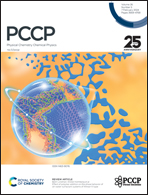Insight into the fracture energy dissipation mechanism in elastomer composites via sacrificial bonds and fillers†
Abstract
Most tough elastomer composites are reinforced by introducing sacrificial structures and fillers. Understanding the contribution of fillers and sacrificial bonds in elastomer composites to the energy dissipation is critical for the design of high-toughness materials. However, the energy dissipation mechanism in elastomer composites remains elusive. In this study, using a tearing test and time-temperature superposition, we investigate the effect of fillers and sacrificial bonds on the energy dissipation of elastomer composites consisting of poly(lipoic acid)/silver-coated Al fillers. We found that the fillers and sacrificial bonds mutually enhance both the intrinsic fracture energy and the bulk energy dissipation, and moreover the sacrificial bonds play a more important role in enhancing fracture toughness than the fillers. It is unreasonable to rely solely on the loss factor for bulk energy dissipation. The addition of sacrificial bonds results in a chain segment experiencing greater binding force compared to the addition of fillers. This suggests that the chain segment consumes more energy during its movement. By calculating the length of the Kuhn chain segment and the Kuhn number, it is evident that the addition of sacrificial bonds results in a greater binding force for the chain segment than the addition of fillers, and this enhanced binding force increases the energy consumption during the motion of the chain segment.



 Please wait while we load your content...
Please wait while we load your content...